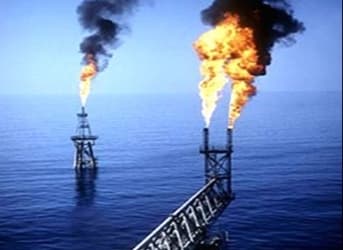The BRIC (Brazil, the Russian Federation, India and China) is an interesting political and economic conglomeration. Currently, only the Russian Federation is a major oil exporter, while the ongoing prosperity of both China and India depends on continued access to reliable sources of oil and natural gas imports.
The BRIC acronym is sometimes expanded to BRICS to include South Africa, another energy deficient state, with all five states recently hosting a summit in Durban, South Africa.
In terms of a rising energy profile, the BRIC darling is currently Brazil. The U.S. energy Information Administration in its Brazil “Country Analysis” brief notes simply, “Brazil has made great strides in increasing its total energy production, particularly oil and ethanol. Increasing domestic oil production has been a long-term goal of the Brazilian government, and recent discoveries of large offshore, pre-salt oil deposits could transform Brazil into one of the largest oil producers in the world.”
Two years ago Francisco Nepomuceno Filho, Petrobras (NYSE: PBR) London head of exploration and production commented, "Brazil as a whole could have a potential of the same size of the North Sea, including Norway and the U.K." Nepomuceno's comments should not be taken lightly, as Petroleo Brasileiro S.A., more familiarly known as Petrobras, is Brazil's most important energy conglomerate, the world's 20th largest energy concern and the country's largest company. In 2010 Brazil was producing 2.7 million barrels per day (bpd), with Petrobras setting an ambitious target of 6 million bpd production by 2020, which, if achieved, would see Brazil out-producing OPEC's second-largest exporter Iran, whose current production is roughly 4.5 million bpd.
Why the optimism?
In 2012 Brazil became an oil exporter for the first time, and its offshore oil deposits, conservatively estimates at 50 billion barrels, roughly in line with North Sea deposits, some optimists place at up to 150 billion barrels of recoverable crude. Petrobras president Sergio Gabrielli is optimistic that his company can overcome the immense technological challenges in exploiting the offshore fields lying under salt domes, commenting, “In the (offshore) pre-salt area, our exploration has a success rate of 87 percent, compared with a world average of 20 percent to 25 percent for the industry.”
Petrobras has announced plans to invest $236.7 billion over the next four years to increase production through 2015, more than any other major oil producer in the world.
Just one offshore Brazilian field, Lula/Cernambi, is estimated to contain an eye-watering 7 -11 billion barrels of recoverable crude, leading the deposit to be labeled the one of the Western Hemisphere’s biggest oil discovery in the last three decades.
But Western companies salivating for a piece of the action, take note – in 2010 Brazil passed legislation that makes Petrobras the sole operator of any new offshore exploration areas in the pre-salt, which stretches 500 miles along Brazil’s southern Atlantic coastline from Espirito Santo to Santa Catarina states.
And down the road? The Economist Intelligence Unit predicts that Brazil’s economy will be larger than any in Europe when by 2020 it overtakes Germany to become the world’s fifth biggest global economy after China, predicted to be by then the world’s leading economy, followed by the U.S., India and Japan.
So, where will any additional money for developing Brazil’s offshore oil fields come from?
This is where it gets interesting, as at the Durban summit the BRIC nations agreed to establish the BRICS Development Bank with an initial working capital of a $100 billion. Seeing the writing on the wall, the World Bank hastened to state, “We welcome the announcement of the establishment of a BRICS development bank and stand ready to work closely with the new bank to end poverty and build shared prosperity throughout the developing world. Establishing a development bank is a significant undertaking. The World Bank will work closely to partner with regional development banks in a bid to enhance the effectiveness of our collective work. We await the details related to the new bank’s financing, governance, and location and stand ready to assist this newest player in global development any way we can. For over 60 years, the World Bank has worked around the world building its staff, knowledge, capacity, and expertise in development. We look forward to sharing the expertise we have gained.”
ADVERTISEMENT
Given that BRICS South Africa, India and China are all energy deficient, expect to see some ‘frank and candid” behind closed doors discussions about assisting Brazil’s energy ambitions, leaving only the Russian Federation’s nose out of joint.
And those international oil companies that, should they wish to participate, will do so on Brazil’s terms.
By. Dr. John C.K. Daly of Oilprice.com


















